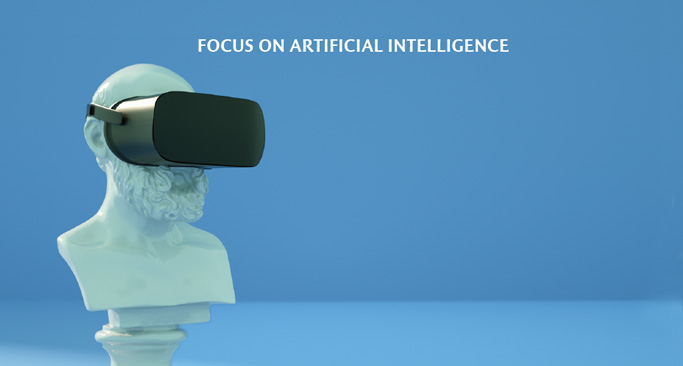Agencies are innovating with technology to
create capacity, efficiency, and more
By Carey Wallace
We have entered the Fourth Industrial Revolution and there is no turning back. In our society, the expectation of immediate and accurate access to an infinite amount of information anytime and anywhere is now the norm. We expect to have this access immediately, and we are consuming more information and inputs today than many of us ever imagined possible.
Technology, data and artificial intelligence are transforming the way we do just about everything.
For many of us, the thought of self-driving cars was just a fun idea in a far-fetched cartoon—as was video conferencing on our watches and a machine with a conveyor belt that we passed through to get ready for our day. We are now living in that cartoon.
The question is: “Are we as business owners evolving the way we operate inside our agencies as fast as our own expectations are changing in seemingly every other part of our lives?” While technology, data and artificial intelligence are clearly changing the game, relationships remain essential to the core of what we do as independent agencies.
Customer risks are evolving at a rapid rate as well, making it more important than ever for people we do business with to rely upon our trusted relationships to ensure that they are well protected. The complexities of insurance will continue to increase and therefore the relationship side of our business will never be replaced by any amount of technology or data. In fact, many believe that the agency of today and tomorrow will be the one that can best strike the right balance between relationships, data and technology as society continues to change.
Forces driving change
For the most part, change for change’s sake does not happen. The reality is change comes about when some kind of pain exists.
For years, many outsiders have viewed our industry as an incredible opportunity for innovation because insurance is complicated, and our process seemed both arduous and archaic when compared to other industries. What these outsiders didn’t realize was there was not enough pain in our business to drive change. For many years, we operated in a soft market where there was an abundance of coverage choices, where renewal rates remained high, and where operating an agency at a high profit was obtainable by many. But that is now changing.
In recent years, the employment market has become much more challenging for a number of reasons. The average age of an agency owner, producer and client service representative all hover around 55 years old. As baby boomers approach retirement age, we are facing one of the largest talent gaps our industry has ever faced, coupled with a strong expectation of remote or hybrid work environments that was fueled by the COVID pandemic.
Also, we’re experiencing a heightened level of merger and acquisition activity due to the aging demographic, high multiples driving the highest valuations in our history, and (for many) no internal perpetuation plan options. Increasing interest rates have created a sense of urgency for some agencies; they feel they may have missed the height of the multiples, so sale transactions are on the rise. In addition, the hard insurance market has increased the amount of work required to best serve clients, meet their expectations and maintain high retention rates.
All of these factors boost the need to adopt technology to create capacity and efficiency as the marketplace shifts and changes.
Rethinking the team
The biggest asset (and largest expense) inside any agency is its people. Knowing that relationships are so critical, many agencies are rethinking how they utilize time and create capacity for team members.
This may include breaking the various tasks that typically are included in each of the traditional roles into categories, such as administrative, data-entry, appointment setting, research, data gathering, advising and relationship building. The next step is to determine who on the team is best suited to do each of the tasks.
In some cases, agencies are utilizing virtual assistants to handle some of the frequent and repetitive tasks, or they are investing in bots or RPA (Repetitive Process Automation) to automate the data-gathering, -capture, -entry, and -reconciliation tasks.

The agencies that are thinking differently about their staff, investing in technology, leveraging data, and innovating—including with artificial intelligence—are redefining the benchmarks for growth, profitability, and efficiency … .
Creating capacity
Many agencies have invested in technology that allows them to automate outreach. For instance, if a customer is not expecting a change or a rate increase of more than 20%, they will be sent an automated message. Customers who have a situation that requires a coverage change, or if they had a claim, or if they’re expecting a rate increase higher than 20%, they will receive a call and the agency will provide alternative options.
By segmenting clients into several different categories, agencies are able to continue providing a high level of service without requiring the same human interaction in every situation. Such a tiering process requires clean data to make sound decisions, and you should expect that the criteria will look and feel different based on the agency’s customer makeup, location, carrier partners, and the insurance environment specific to the agency.
But the impact and outcome should be the same: higher capacity.
Capacity also can be created by leveraging technology to remove friction in the sales, retention, and service processes. This includes technologies like SALT, Canopy Connect, Gaya, RiskAdvisor, and several others.
In addition, agencies are utilizing AI tools like ChatGPT to build content, analyze data, speed up processes and train their staff. This increase in using both technology and AI comes with a heightened level of challenges and dangers if the technology or tools are not utilized properly.
Becoming predictive
One of the biggest changes agencies experience when they leverage both data and technology is they move from being reactive to being predictive. They are able to use insights from data that is collected about their customers to anticipate what other customers’ behaviors may be. This can include possible expanded coverage options, claims, or even the chance of losing a customer.
By using technology that measures customer experience, the agency can provide the team with the data they need to increase the likelihood the customer will be well served and will remain with the agency. This could be a Net Promoter Score, which is based on a single survey question, all the way to a sentimeter score that is based on the ongoing analysis of customer interactions that include emails, phone calls, claims, payment history, and selected external data that is available for the customer. These data points are used to assign a score to the client, predicting their likelihood to leave the agency, need an additional type of coverage, or benefit from a payment program that the agency offers.
This data can be applied to other clients within the agency’s book of business that have the same characteristics, and also to prospects—to prioritize work and increase efficiency, sales and retention.
Some agencies are increasing their retention rates and/or maximizing their leads by subscribing to a service that alerts them when anyone inside a household is online, using any keywords that would indicate that they are searching for insurance. By receiving these alerts, the agency can be proactive in reaching out and providing the client or prospect the advice needed to obtain the insurance coverage that they are searching for online.
Redefining the benchmarks
The agencies that are thinking differently about their staff, investing in technology, leveraging data, and innovating—including with artificial intelligence—are redefining the benchmarks for growth, profitability and efficiency inside agencies.
These firms have the ability to respond to their at-risk customers faster, causing their retention rates to increase. They are able to identify cross-sell opportunities quicker than agencies that do not have the same data insights, and this is having a positive impact on growth from both new business and retention perspectives.
They are well-positioned to acquire agencies that are not innovating, because they have both the infrastructure and staff to handle increased volume. Staff turnover is lower as a result of redefining the workload and providing predictive analytics to the team. This results in the team having higher job satisfaction and the ability to advise more clients, which helps increase sales and retention. This increased success rate in both sales and retention makes team members more likely to achieve their individual goals and ultimately earn more and be less likely to leave.
These agencies are changing the game. And the gap is getting wider and wider, seemingly by the minute, between the agencies that are evolving and those that are not.
The adoption of technology, use of data, and the overall rate of change in our society is not slowing down, it is speeding up. Our expectations as consumers will continue to increase as our society changes; that is just basic human nature.
The agencies of today and tomorrow are the ones that continue to evolve and meet their customers’ changing expectations with the right balance of relationships, data, and technology.
The Fourth Industrial Revolution is here to stay. Is your agency?
The author
Over the past 16 years, Carey Wallace has worked with hundreds of independent insurance agencies helping them understand their agency’s value and turn that knowledge into an actionable plan for their future. She prides herself on taking the time to understand the agency’s unique situation and helping them build the future they envision for themselves. She is a Certified Exit Planning Advisor (CEPA) and provides a variety of business consulting services including valuation, perpetuation planning services, acquisition support, financial and compensation analysis, and fractional CFO services through the company she founded, Agency Focus, LLC. Please visit www.agency-focus.com or contact Carey at Carey@agency-focus.com to learn more.






